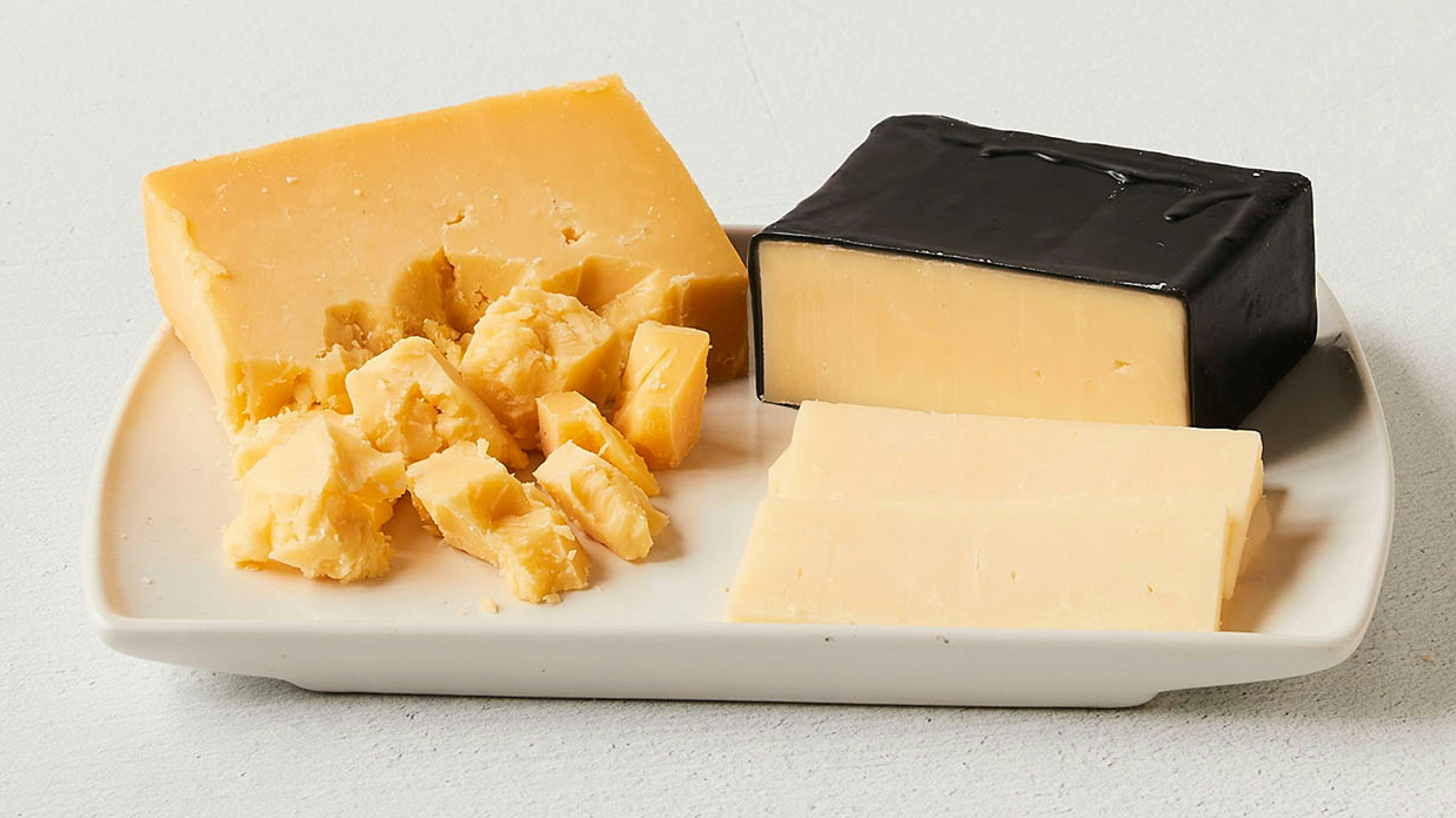Exploring the Universe of Cheddar Cheese
Behind the RindFEB 08, 2024
From Sweet to Savory, Creamy to Crumbly
Cheddar cheese, a staple of the cheese world, has a rich history that spans centuries and a taste so universally beloved that it transcends borders. Hailing from Somerset, England, Cheddar's journey from humble beginnings to global stardom is a cheesy tale worth savoring. Its origins date back to the 12th century when English farmers discovered the art of curdling milk and pressing it into dense blocks. Fast forward to today, cheddar has become a household name, gracing the plates of cheese enthusiasts worldwide. Whether you prefer it crumbly or creamy, sweet or savory, cheddar's versatility knows no bounds.
Sweet Cheddar
When we talk about fruity, or sweet, cheddars, we generally mean those with notes of caramel, butterscotch, and bright tropical fruits. Fruity or sweet cheddars are often younger cheeses, meaning they have been aged for a shorter period, typically 2-3 months.
Savory Cheddar
Cheddars on the other end of the spectrum tend to lean towards flavors of pepper, grass, broth, or even roast beef, with a richer, mouthwatering flavor and occasional prickly bite. Expect these cheddars to be aged 12-months or beyond. These cheddars are also sometimes called “sharp”.
Examples: Quicke’s Goat Cheddar, Neal’s Yard Dairy Montgomery Cheddar
Creamy Cheddar
Younger cheddars retain much more moisture than aged varieties, so these are usually the ones that have a supple, creamy consistency with more elasticity and less crumble.
Examples: New York Yellow Cheddar, Murray’s Smoked Cheddar
Crumbly Cheddar
Because they lose moisture as they age, older cheddars have a firmer, crumbly and sometimes crunchy paste that’s usually bolder in flavor than some young varieties.
Examples: Lincolnshire Poacher, 5 Spoke Creamery Tumbleweed
Fun Fact
Cheddar’s golden yellow color is all natural, coming from the beta-carotene, a natural pigment found in the grass that the cows graze on. The bright orange cheddars we see gracing store dairy sections are enhanced with the addition of annatto seeds, which are a flavorless natural dye made from the seed or extract of the achiote tree, indigenous to parts of Latin and South America.
Explore more
Share
